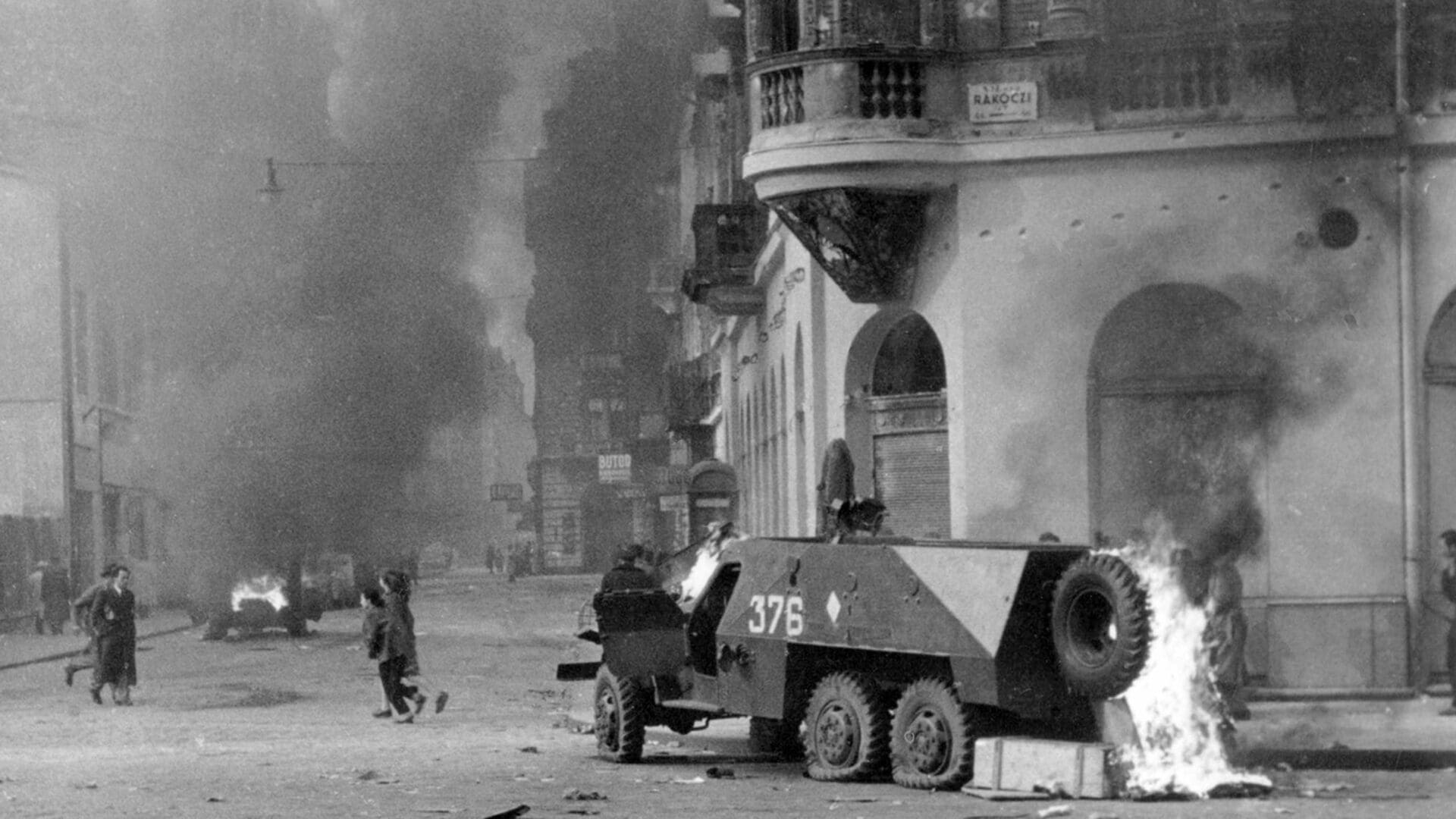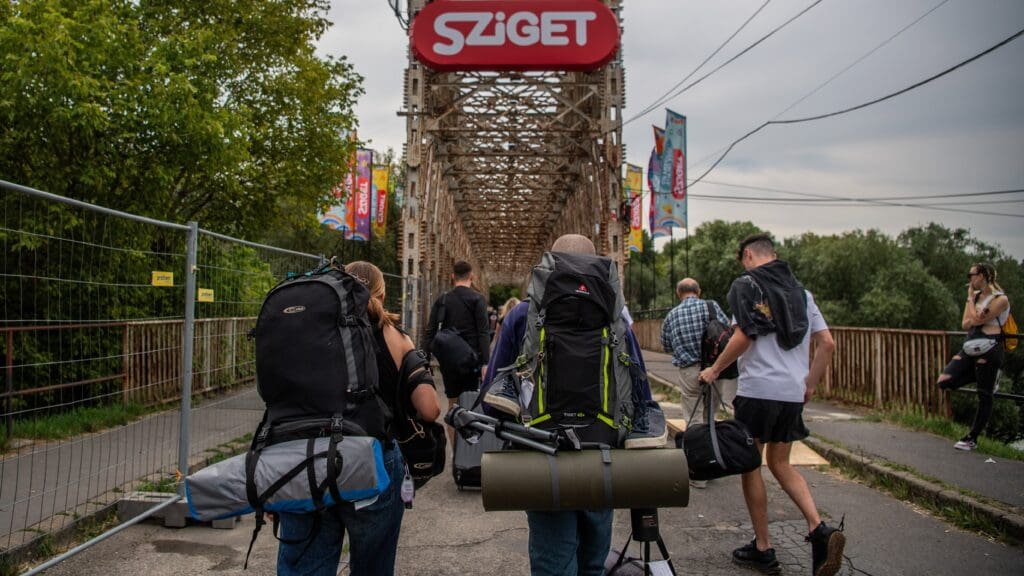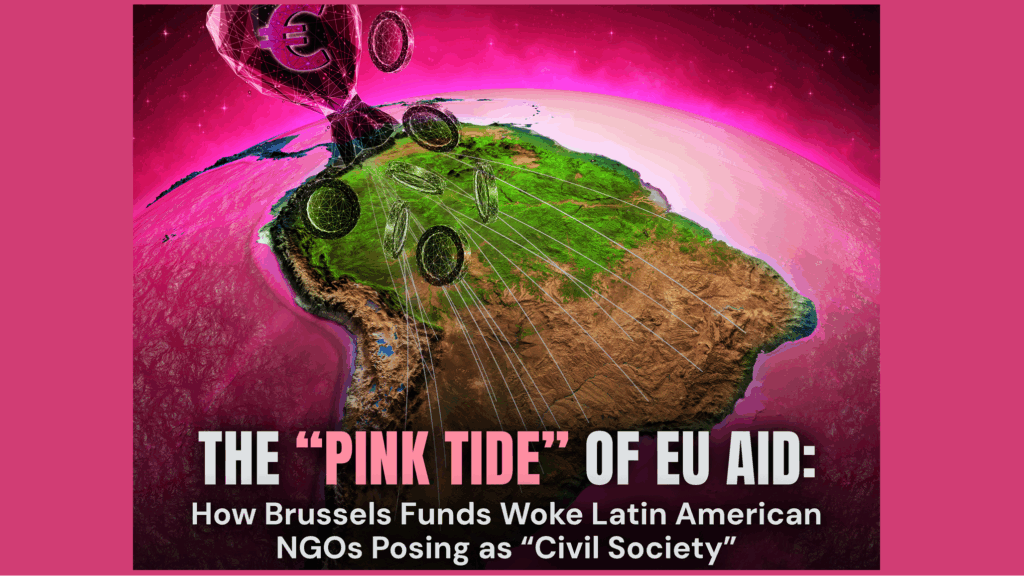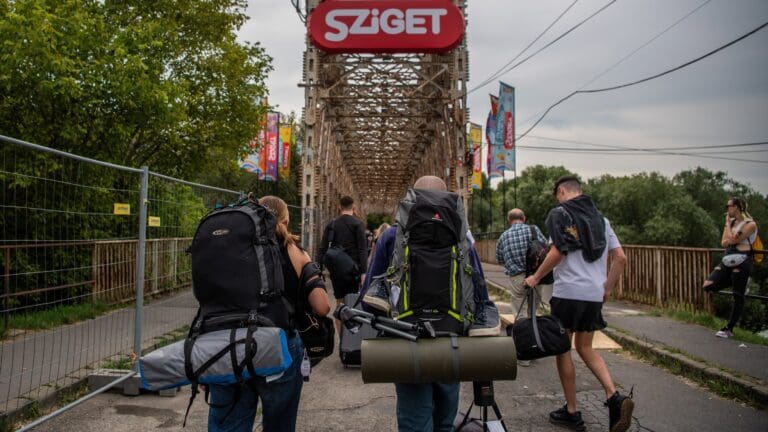Active Military Resistance: 4–11 November
On 4 November 1956, Soviet tanks rolled into Budapest to suppress the revolution. Although the first line of defence of the Hungarian regular armed forces was swiftly blown away, due to sporadic resistance by freedom fighters the Moscow-installed puppet government of János Kádár was not able to assume office that day, remaining in Szolnok for a few days, and arriving in Budapest in a Soviet tank only some days later. Even then, Soviets kept the members of the Kádár cabinet practically under house arrest, fearing that Kádár might be assassinated. The Presidential Council of the Hungarian People’s Republic (the collective head of state under communism) only appointed the new government on 12 November. Therefore,
until that day, Imre Nagy was the de jure prime minister, even more so as he famously refused to resign, even under duress.
Needless to say, even after the inducting into office of the new Hungarian government, most of the decisions were made by the Soviets directly. Kádár himself did not fully trust Moscow, or the hardliner, old guard Communists.
The muddled legal situation reflected the military one. While the common perception is that the revolution was crushed on the 4th, there were in fact direct armed confrontations between the Soviets and the revolutionaries until 11 November. The rebels kept fighting in the hope that if the conflict was prolonged for long enough, international pressure would force the Soviets to backtrack.
On 5 November, the Russians commenced an all-out attack on rebel positions, including the famous Corvin Passage. However, this first wave was repelled by the revolutionaries, who were able to continue the resistance, despite facing tanks with nothing but handguns and Molotov cocktails.
In fact, the Soviet invasion barely even reached the resistance groups outside of Budapest. There were many holdouts, both in Budapest (Széna Square in Buda and Tűzoltó Street in Pest, for instance), and in other cities, for example the industrial city of Dunaújváros. On 6 November, however, most, but not all, armed resistance outside of the capital was quashed. During the following days, leading up to 11, the ones in Budapest were also suppressed.
It was Csepel island, the industrial district of Budapest, where the working class revolutionaries put up the strongest resistance.
As late as 7 November, the Csepel freedom fighters carried out a successful counterattack against the Soviets.
However, after being shelled and bombed, they surrendered around 11 November, which effectively ended the active military phase of the revolution. However, as it was mentioned, civilian disobedience and other forms of resistance continued.
Continuous Resistance and Civil Disobedience after 11 November
After military resistance collapsed, political and civil disobedience took its place. The leading forces of the political resistance in the cities were the so-called ‘workers’ councils’, revolutionary cells, which had been organized at workplace to control production. These councils called for a general strike during early November, and were able to maintain at least some level of it until December. These cells had been formed all over the country, but the strongest one was the Greater Budapest Central Workers’ Council. Professional groups like the Hungarian Writers’ Union, or the Revolutionary Committee of Hungarian Intellectuals were also organized, the latter
declaring a silent protest for 23 November. On this date, even public transport stopped in Budapest.
These organizations also issued newspapers and pamphlets, calling for continuous resistance. On 4 December, a ‘Women’s March’ was organized as another act of silent but forceful protest.
The ineptitude of the new government is demonstrated by the fact that the local ‘revolutionary councils’—the democratically elected local authorities, centres of revolutionary activity in smaller towns and villages—remained in place until December, despite the Kádár administration officially disbanding and replacing them with the pre-October local soviets on 10 November. Kádár, however, did not have the power to enforce this decision. Atop of that, in smaller towns and villages, where the Communist power was the weakest, the councils continued to execute the programme of the revolution as late as November, for instance, trying to correct the most severe violations committed during the forced agricultural collectivization. On the other hand, political power was mostly exercised by the workers’ councils in the cities. Their influence was so great that, for instance, the Communist authorities were forced to appoint their local leader as chairman of the regional government in Győr.
Thus, the Communist government was nowhere near effectively controlling Hungary until December.
During the autumn, Kádár tried to negotiate with the remaining revolutionary forces, especially the workers’ councils. He feared the Stalinist old guard and tried to balance power between them and the remaining rebels. However, these talks did not bear many fruits to either side.
Meanwhile, as it was mentioned above, the government of Imre Nagy, who fled to the Yugoslav Embassy in Budapest, refused to resign. In addition, the reformist wing of the Communist party, the leadership of which had fled with Nagy, condemned Kádár, declared their support for Nagy, and established contact with the workers’ councils. Kádár’s rule therefore was also threatened by a prospective alliance between the striking workers and the de jure still functioning Nagy government.
Silencing the Country
Faced with this situation, and after the negotiations failed, Kádár was pressured by the Soviets, and the government decided to respond with violence. Kádár realized that there was no need for him to keep up the pretence of being a genuine reformist, or at least the enemy of the hardliners, since his power was threatened not by them, but rather by the revolutionaries. Therefore, he decided that it was time to strike back. In many cities, including Budapest, the authorities fired shots into crowds of peaceful protesters.
One of the most infamous events was the Salgótarján massacre, perpetrated by occupying Soviets soldiers and Communist militiamen against a crowd of 4,000,
demanding the release of political prisoners. The exact number of the victims is still unknown.
Imre Nagy, who refused to resign, was detained and deported to Romania. The government instituted martial law and started to arrest the heads of the workers’ councils and other revolutionary organizations. However, the Communists were unable to completely quell resistance until as late as December. By January 1957, however, Kádár established his rule all over Hungary.
After all forms of disobedience was put an end to by winter, the brutal retribution started.
Kádár’s government recruited their own security force, which was later named the ‘Workers’ Militia’. These troops harassed and intimidated the population, sometimes without any reason, with the obvious aim to instil fear. During its December meeting, the leadership of the Communist party declared that the ‘October events’, as they would be referring to them for more than three decades, were clearly ‘counter-revolutionary’ in their nature. It must be noted that until then, the official opinion of the Communist party was on purpose kept vague, in order to maintain the possibility of negotiations.
The government put on show trials, with the objective of proving that the revolutionary events were in fact part of a ‘fascist counter-revolution’. About 400 persons were executed, approximately 20,000 were imprisoned, and roughly the same number were interned. A mass exodus of revolutionaries and other dissidents started toward Western Europe. While the Western bloc had not provided meaningful help for the revolutionaries, 1956ers were accepted in its countries in great numbers.
Conclusion
By January 1957, the resistance was mostly suppressed. A silent, but meaningful and defiant action, however, persisted. Supporters of the revolution wrote ‘MÚK!’ into their ID-documents. This was an acronym meaning ‘Márciusban újra kezdjük!’, that is, ‘In March, we shall start over again!’. This caused concern among the Communists, but eventually, nothing happened in March. The few remaining fighters were unable to relaunch the revolution. Those who had fled to the mountains or forests were mostly apprehended by early 1957. Individual attempts like the one of Péter Mansfeld and his comrades were also swiftly suppressed.
Only one partisan group, the so-called ‘Mecsek Invisibles’ in Baranya County held out until spring.
This cell tried to capitalize on the ‘MÚK’ campaign and planned to resume active armed resistance during that month. However, their members were arrested just before commencing their planned March campaign.
As opposed to that, the Communist Workers’ Militia demonstrated its strength in a parade during March. Concluding the reign of terror, and showing its results, on Labor Day in May, tens of thousands of civilians took the streets in support of the Kádár-government. This date marks the consolidation of the regime, and therefore the fact that majority of the population accepted the reality of the new regime. The country needed to wait for a new resurgence of resistance until the 1980s.
Related articles:








